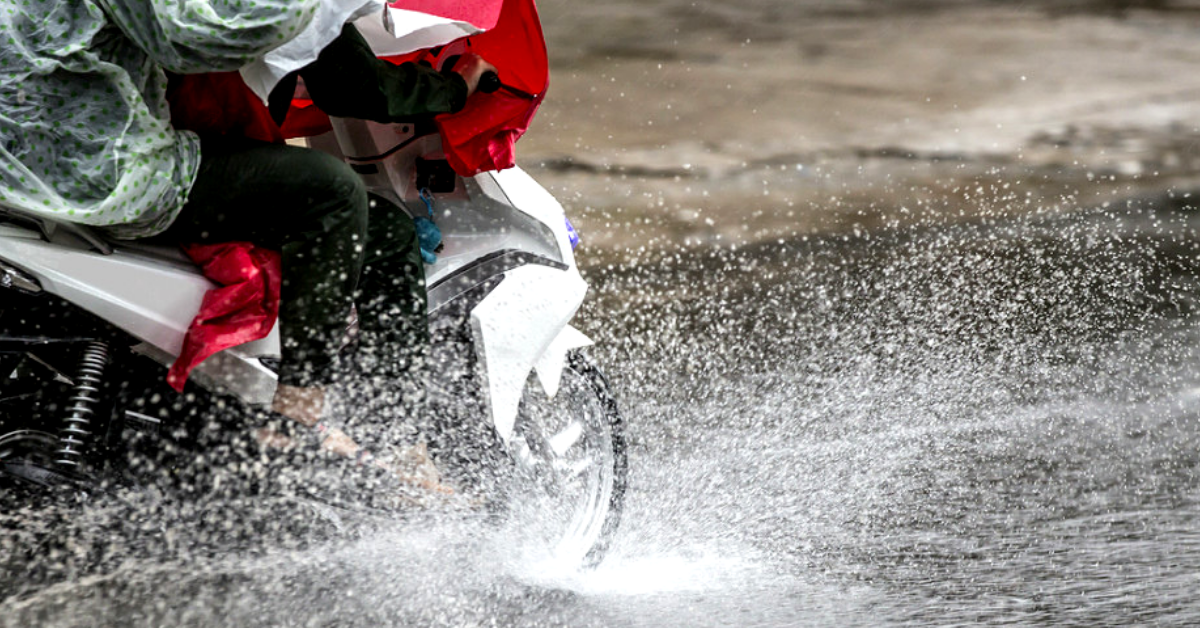Riding a motorcycle during or after a rainstorm is definitely a dilemma for a lot of motorbikers. Adventure junkies, though, see it as the perfect opportunity to test their abilities and get some adrenaline pumping.

While others choose to have the garage door go down with the rain, this article will walk you through all the preparations you’ll need to undertake to be entirely prepared for such a ride.
Rider Preparations
Your safety is the ultimate goal here! That’s why preparations are critical.
Helmet
A helmet’s job doesn’t stop at protecting your head. It can be equipped with an anti-fog visor to clear your vision continuously. Moreover, it must also come with a breath guard to protect the lower half of your face against the rain and the wind.
Waterproof Suit
In normal circumstances, you have to ride with your complete protection gear. But, when it comes to riding in the rain, things change a little bit. You don’t just need to protect yourself against falls and scrapes, but also against the biting cold.
Being soaked will not contribute to the safe riding experience that we’re speaking of, so a complete waterproof suit is mandatory. Add to that gloves, boots, and a neck warmer.
Remember to try these gears before purchasing them, as the thickness of a pair of gloves is directly proportional to the heat and warmth they’ll provide, for example. If the gloves are too bulky, you might not be able to control your motorbike easily. The same goes for neck warmers, which might prevent you from looking around sufficiently to gauge your environment.
Riding Style
This is a critical point you’ll need to practice when you decide to go out in the rain. You must be smart about your choices; acceleration and deceleration must be performed slowly and smoothly to avoid the turnover of your bike.

Relax your body and keep a firm grip on all your controls without getting too excited. Furthermore, try to locate a dry line and keep to it, avoiding paints and potholes as much as possible.
Check Surroundings
You’re never alone on the roads. When visibility is diminished, you have to be responsible for your actions and wary of others’. When approaching an intersection, know that the oils released from the pavement and the road will increase, so go easier on your brakes.
Moreover, make sure to always check your rearview mirrors for any fast approaching cars that can hit you. Lastly, try not to run any yellow lights and wait it out in your dry lane to avoid accidents.

Bike Preparations
Now, onto the bike preparations. You have to be completely confident in the capabilities of your bike and that it can withstand such weather without damage.

Tires
If you only have slick tires, you should avoid going out from the beginning, as they’re not suitable for such routes. The stickier your tires are, the better, to regain some of the traction lost due to the release of oils and their mix-in with the rain. Additionally, narrower tires can slice through puddles a lot smoother than thicker ones.
Windshield
Go for a durable windshield with reasonable height so that you won’t have to stretch and try to stand on your bike to look above it when your first priority should be keeping your balance and stability. A windshield should go up to your nose to improve visibility and offer extra protection from the whipping wind and rain.
Brakes
Make sure the performance of your brakes is on point, and that they have as much break material as they need to work smoothly. You don’t want to, best case scenario, have to stop on the side of the road to try and fix your bike, or, worst-case scenario, not be able to stop and crash into something or flip over it.
Final Thoughts
In the end, we’d like to wrap up and say unless you’re a professional motorbiker, steer clear from riding out in the rain, as accidents can happen to even the most experienced riders. There’s no need to risk it as long as you’re not prepared.
Always make sure that your planned route is known to more than one person just in case of an accident. Be safe in all weathers!

